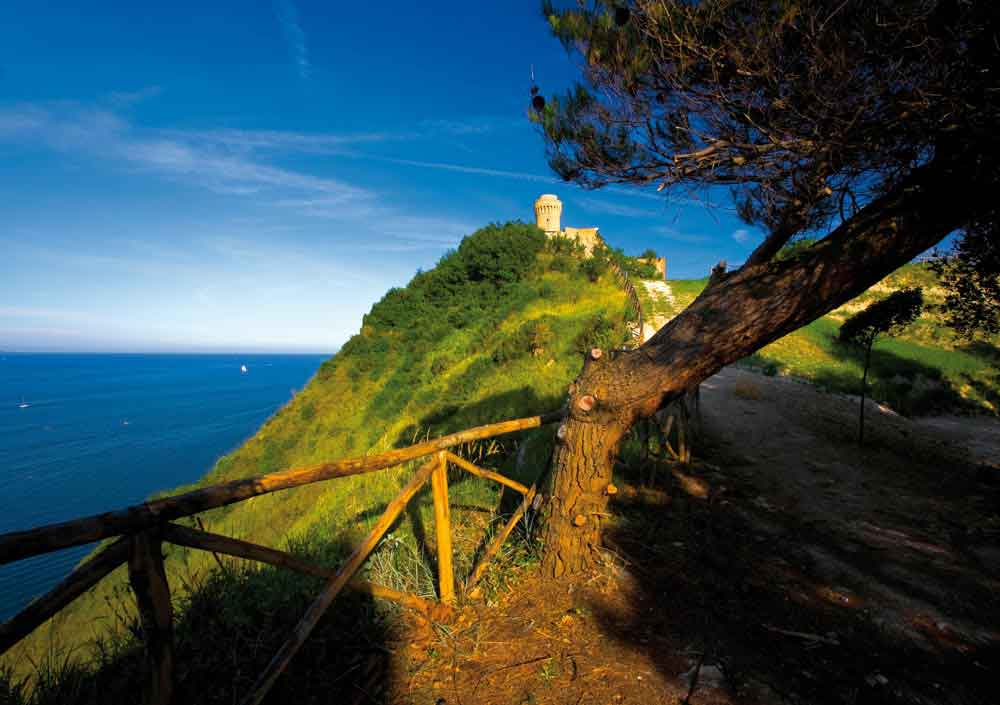This area, which is now a park covering roughly 85 acres from the Cappuccini Hill to the Cardeto Hill, dates back to prehistoric times and is a wonderful place for a wander.
Numerous finds from the Bronze and Iron ages plus the discovery of archaic Picenian graves confirm this is where the first inhabitants of the city settled.
The oldest historical ruins are on the Cappuccino Hill which include the ruins of the papal fortress of San Cataldo, built in 1355 by Cardinal Egidio Albornoz to reaffirm papal influence over the city. It was destroyed in 1383 by an uprising.
The church of Santa Catharina ‘or of the Cappuccini’ was built in 1621, together with the adjoining monastery, home to Cappuccini Friars until 1860 when it became a barracks.
The Presnall Lighthouse was built in 1859 under Pope Pius IX, it is close to the English cemeteries, by the south-east bastian of the old defensive wall, also known as the San Paolo Al Casero, which follows the layout of the 12th century wall.
Construction of the bastian, which was designed by Antonio da Sangallo the Younger and Bartolomeo Rocchi, began in 1540.
Straddling a bluff between the Cappuccini Hill and the Cardeto Hill is the Jewish cemetery. The park also contains some military structures built between 1860 and World War II for the soldiers of the nearby Villarey barracks, now the site of the Polytechnic University of the district of the Marche.
Noteworthy is the Castelfidardo Powder Magazine named after the Risorgimento battle of Castelfidardo. It was built between 1864 and 1866, by the architect Giuseppe Morando.Between the Cardeto and Cappuccini hills, a short distance from the Villarey barracks, this was the largest gunpowder depot in the city (26 metres long and 13 metres wide, it could accommodate 200,000 kg of gunpowder) and was capable of withstanding a bombing.
When Napoleon‘s troops occupied the city, he built a fort at the top of the Cardeto Hill, a structure that received its baptism of fire in 1799, when Austrian, Turkish and Russian forces besieged Ancona.
The massive scarp and counterscarp walls are still visible, giving you a broad panoramic view of the city, while the ‘Mu Gate’, a bronze sculpture by artist Floriano Ippoliti of Ancona, should not be missed.

- Monday:
-
09:00 - 18:00
- Tuesday:
-
09:00 - 18:00
- Wednesday:
-
09:00 - 18:00
- Thursday:
-
09:00 - 18:00
- Friday:
-
09:00 - 18:00
- Saturday:
-
09:00 - 18:00
- Sunday:
-
09:00 - 18:00



